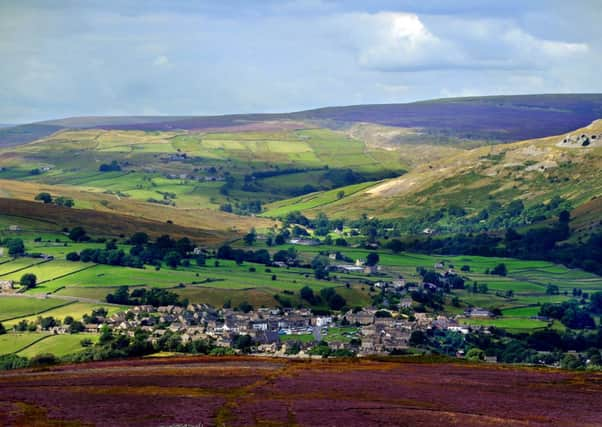A third of workers in rural parts of region do not earn living wage


Twenty-two per cent of all employees are earning less than the wage that provides a “basic but decent standard of living”, according to research published by KPMG, an increase from 21 per cent last year.
The study shows that 5.28 million people are now paid less than the living wage, up 147,000 from 2013, with a “worrying trend” of rises among part-time, female and young workers.
Advertisement
Hide AdAdvertisement
Hide AdIn Yorkshire and the Humber, 481,000 of the 1,962,000 people in work are earning less than the living wage, putting the rate for the region above the national average at 25 per cent. The median wage in the region is £10.61, below the UK average of £11.62.
Its three areas with the highest number of people under the living wage level are all in North Yorkshire, with Hambleton, Craven and Richmondshire all having 32 per cent of their workforces paid less than £7.65 an hour.
The economies in many rural communities across the region, such as Swaledale in Richmonshire, are reliant on low-wage industries such as farming and tourism.
It was announced today that the living wage is to increase by 20p to £7.85 an hour, boosting the pay of 35,000 workers nationwide.
Advertisement
Hide AdAdvertisement
Hide AdA higher hourly rate will be announced by London Mayor Boris Johnson for the capital later, to replace the current £8.80. Both figures are well above the national minimum wage of £6.50 for adults. The number of employers who have signed up to pay the Living Wage has more than doubled this year to over 1,000, including 18 in the FTSE 100, such as Canary Wharf Group.
Rhys Moore, director of the Living Wage Foundation, which sets the living wage, said: “As the recovery continues it’s vital that the proceeds of growth are properly shared.
“It’s not enough to simply hope for the best. It will take concerted action by employers, government and civil society to raise the wages of the five million workers who earn less than the Living Wage.
“Those businesses that can should follow the example of Nestle and Nationwide, as well as hundreds of smaller, independent businesses like CTS Cleaning and independent building contractor Hodgson Sayers, who pay the Living Wage.
Advertisement
Hide AdAdvertisement
Hide Ad“Low pay costs the taxpayer money, firms that pay the minimum wage are seeing their workers’ pay topped up through the benefits system. So it’s right that we recognise and celebrate those employers who are voluntarily signing up to the higher Living Wage, and saving the taxpayer money in the process. The Living Wage is an independent calculation that reflects the real cost of living, rewarding a hard day’s work with a fair day’s pay.”
Mike Kelly of KPMG said: “Although there are almost 1,000 organisations pledged to pay a Living Wage, far too many UK employees are stuck in the spiral of low pay.
“With the cost of living still high, the squeeze on household finances remains acute, meaning that the reality for many is that they are forced to live hand to mouth. Inflation may be easing, but unless wages rise we will continue to see huge swathes of people caught between the desire to contribute to society and the inability to afford to do so.
“For some time it was easy for businesses to hide behind the argument that increased wages hit their bottom line, but there is ample evidence to suggest the opposite - in the shape of higher retention and higher productivity.”